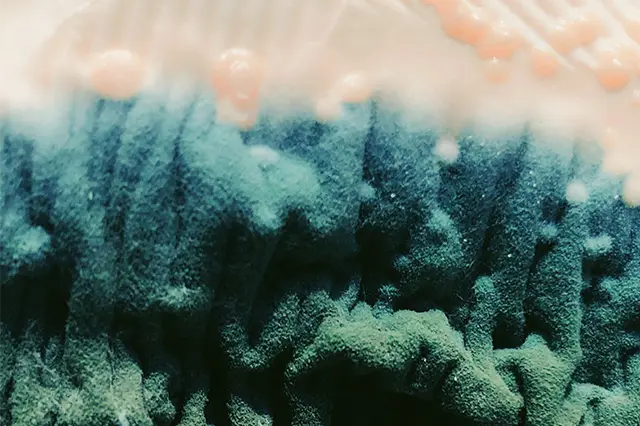How to Detect Mold in Your Home or Office
It’s been a month since you moved into your new home or office, and already it’s starting to feel like home. But what about that pesky mold? Mold can be a real problem in any environment, but it can be especially problematic in homes or offices where people spend a lot of time. In this blog post, we will discuss the signs of mold and how to best avoid it. We will also offer some tips for cleaning up mold if it does occur.
What Is Mold?
Mold is a spore-forming fungus that can grow in many different environments, including homes and offices. The symptoms of mold exposure can vary, but may include coughing, wheezing, chest tightness, fever, and tiredness. If you suspect that you or someone else in your home or office has mold, the best way to test for it is with a professional testing kit. If you do decide to test for mold yourself, be sure to follow the safety guidelines listed by the Centers for Disease Control and Prevention (CDC).
How to Tell If Mold is a Problem
Is mold growing in your home or office? The answer is likely yes if you have these six tell-tale signs: black mold, white mold, fuzzy growth, severe odor, Sheetrock damage, or red patches on walls or ceilings. Here’s how to tell the difference between these problems and what to do about them.
If you’re noticing any of the following symptoms in your home or office, it’s probably time to call a professional: black mold, white mold, fuzzy growth, severe odor, Sheetrock damage, or red patches on walls or ceilings.
1. Black Mold: This is probably the easiest problem to identify because it always looks like a black spore cloud. It can be found growing on wood surfaces (such as bookshelves), inside air vents and even in water droplets. If you see black mold growing anywhere in your house or office, don’t wait – get professional help ASAP!
2. White Mold: White Mold looks like snow but smells terrible – almost like vinegar. It’s often found on damp surfaces (like near a leaky faucet) or in areas with high humidity (like a bathroom). If you see white mold growing anywhere in your house or office, don’t wait – get professional help ASAP!
3. Fuzzy Growth: This is another easy sign to identify because it looks like cotton candy. Fuzzy growth may also appear as small pink bumps that are hard to remove.
4. Severe Odor: If you’re noticing an extremely bad odor coming from your home or office, it’s most likely due to mold growth.
5. Sheetrock Damage: If you notice any damage to your Sheetrock – either holes or reddish patches – it’s likely due to mold growth.
6. Red Patches on Walls or Ceilings: If you see red patches on walls or ceilings, it’s probably due to mold growth.
If any of the above signs are present, it’s time to call a professional. There are many different types of mold – some are more poisonous than others – so it’s important to get help from a qualified expert. They’ll be able to identify the type of mold and give you the best tips for removal and prevention.
How to Remove Mold from Your Home or Office
Mold is a fungi that can form in moist environments, such as homes or offices. It can cause health problems if inhaled or ingested, and should be removed from any areas where it may be present. There are several ways to remove mold from your home or office:
1. Use a wet vac to clean up the area. wet vacs suck up water and debris, which helps to remove the mold and its spores.
2. Empty and scrub all surfaces with a Mold-Buster chemical cleaner. This will kill any mold colonies that have formed on the surface. Take care not to get the cleaner in your eyes or mouth!
3. Remove any contaminated materials, such as drywall, insulation, carpeting, books, furniture, etc. If these materials are wet when removed, they may create additional moisture for mold growth.
4. Seal off the area with plastic sheeting and tape until it can be professionally cleaned. Make sure all windows and doors are closed to prevent further contamination from entering the room.
5. Contact a mold removal professional to take care of the entire job. Professionals have the equipment and knowledge necessary to completely clean and sanitize the area, as well as remove any remaining mold colonies.
Mold can be a serious health hazard, so it is important to take steps to remove it from any areas where it may be present.
What to Do if You Can’t Remove Mold from Your Home or Office
If you have been unable to remove mold from your home or office, it is important to take action. There are a few things you can do in order to reduce the amount of mold present and make your environment safer.
1. Remove all the furniture and appliances that could be contaminated with mold. This includes anything that has water damage or any other signs of contamination.
2. Wipe down all surfaces inside and outside of the home or office with a bleach solution mixture of one cup bleach per gallon of water. Be sure to use a cloth to avoid getting bleach on any surfaces that you do not want it on.
3. If there are any visible signs of mold growth, such as black spots, they should be removed immediately with a Mold-X cleaner solution or by scrubbing with a stiff brush. Make sure to wear gloves and protective eyewear while doing this.
4. Seal all cracks and openings in the home or office with duct tape or plastic sheeting in order to prevent moisture and mold from entering the building again.
5. If you are experiencing health problems such as asthma, it is important to keep the environment in your home or office as clean and mold-free as possible in order to avoid exacerbating your symptoms.
If you have been unable to remove mold from your home or office, it is important to take action.
Conclusion
If you suspect that you or someone else in your home or office has mold, the best way to test for it is with a professional testing kit. If you do decide to test for mold yourself, be sure to follow the safety guidelines listed by the Centers for Disease Control and Prevention (CDC). There are several ways to remove mold from your home or office, including using a wet vac, Bleach solution mixture, Mold-X cleaner, and duct tape or plastic sheeting. If you are experiencing health problems such as asthma, it is important to keep the environment in your home or office as clean and mold-free as possible in order to avoid exacerbating your symptoms.

